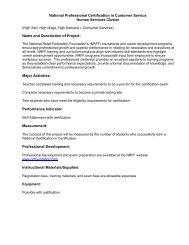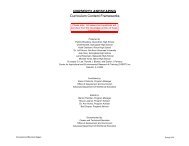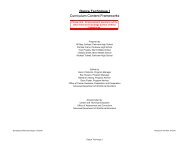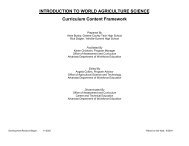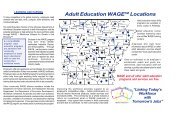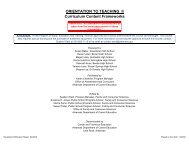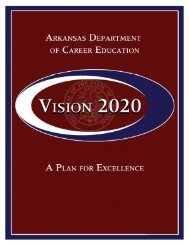Feb-Mar08counselor - Arkansas Department of Career Education ...
Feb-Mar08counselor - Arkansas Department of Career Education ...
Feb-Mar08counselor - Arkansas Department of Career Education ...
Create successful ePaper yourself
Turn your PDF publications into a flip-book with our unique Google optimized e-Paper software.
page 4<br />
T<br />
here is no question that home telecommunications<br />
have changed<br />
dramatically in recent years. The<br />
<strong>Arkansas</strong> <strong>Department</strong> <strong>of</strong> Workforce <strong>Education</strong>’s<br />
Division <strong>of</strong> Rehabilitation Services’<br />
Telecommunications Access Program<br />
(TAP) keeps up-to-date on those<br />
technological changes because they affect the<br />
agency’s customers and the equipment provided<br />
to them.<br />
All <strong>of</strong> the amplified phones currently distributed<br />
are analog units, and up until fairly<br />
recently, there was only analog service. Now,<br />
more and more TAP customers are subscribing<br />
to digital service providers that make DSL and<br />
VOIP options available. The advent <strong>of</strong> digital service<br />
options means our customers can no longer<br />
just plug their amplified phone into the wall jack.<br />
In order to make some sense <strong>of</strong> all <strong>of</strong> this, it<br />
helps to know the definitions <strong>of</strong> the following acronyms:<br />
POTS – This is the traditional telephone service<br />
that most people have in their homes. It stands for<br />
Plain Old Telephone Service. All <strong>of</strong> TAPs amplified<br />
phones work with POTS with no difficulty.<br />
VOIP – Stands for Voice Over Internet Protocol<br />
and is a technology that allows the customer to make<br />
Telecommunications Access Program (TAP)<br />
Lynn Vigneault, Program Administrator<br />
voice calls using a broadband internet connection instead<br />
<strong>of</strong> an analog phone line.<br />
DSL – Digital Subscriber Line is a combination<br />
<strong>of</strong> POTS voice service and digital internet service.<br />
DSL uses existing copper pair phone line<br />
wiring in conjunction with special hardware on the<br />
switch and user ends <strong>of</strong> the line. This<br />
special hardware allows for a continuous<br />
digital connection over the phone<br />
lines.<br />
Customers who are deaf and use<br />
a TTY will be unable to directly connect<br />
it to a digital phone line unless there is a<br />
separate analog line, port or converter available.<br />
Not following these guidelines could cause serious<br />
damage to the equipment. Customers using a<br />
CapTel phone will likewise be unable to use their devices<br />
with DSL without an analog filter between the<br />
CapTel phone and the DSL connection. Occasionally,<br />
more than one filter may have to be used to stop<br />
any leakage from the digital side into the analog voice<br />
side.<br />
For additional information, contact Lynn<br />
Vigneault at the <strong>Arkansas</strong> <strong>Department</strong> <strong>of</strong><br />
Workforce <strong>Education</strong>’s Division <strong>of</strong> Rehabilitation<br />
Services’ Telecommunications Access Program<br />
at 800-981-4463 (V/TTY).<br />
DWE Director William L.<br />
“Bill” Walker, Jr. recently<br />
addressed students, faculty<br />
and staff at <strong>Arkansas</strong> Tech<br />
University’s Ozark campus.<br />
(At left) Director Walker visits<br />
with Adult <strong>Education</strong> students<br />
and (2 nd fr. left) <strong>Arkansas</strong> Tech<br />
University President Dr.<br />
Robert C. Brown and (2 nd fr.<br />
right) Ozark campus Chancellor<br />
Dr. Jo Alice Blondin.



